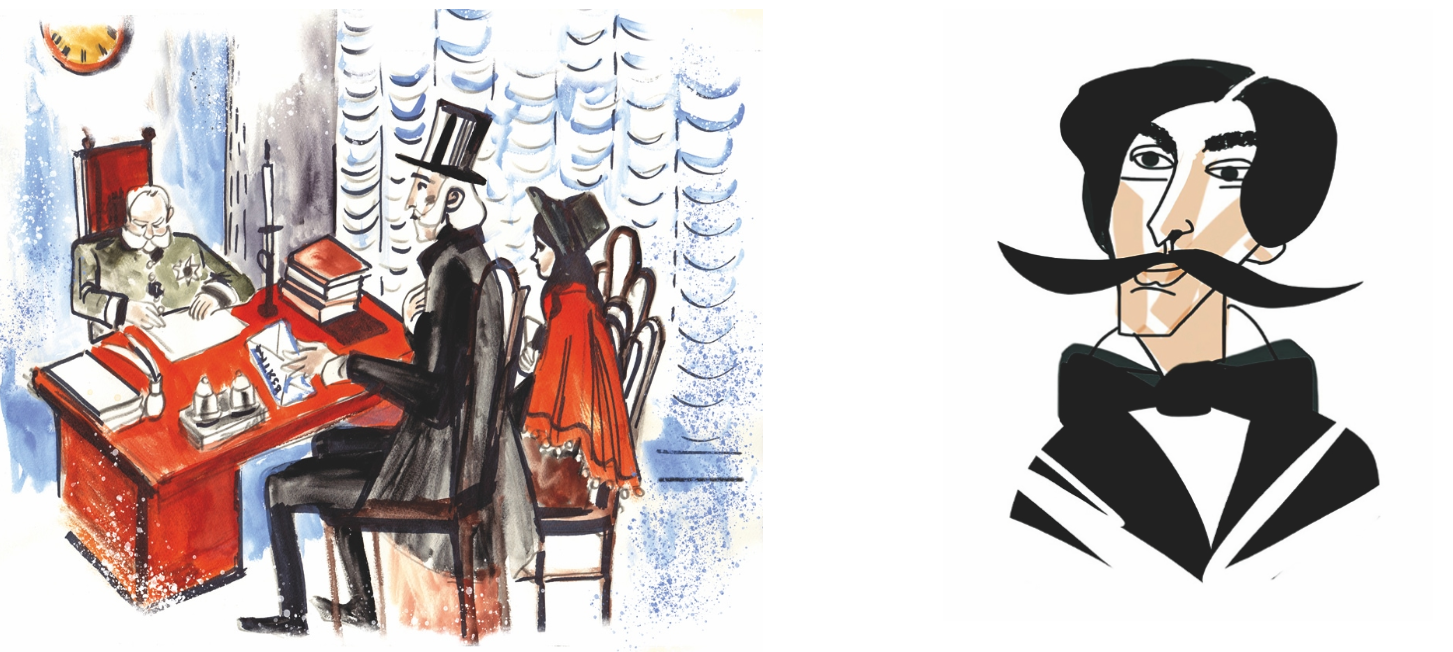"The Case" (1861)

"The Case" by Alexander Sukhovo-Kobylin
Alexander Sukhovo-Kobylin entered the history of the Russian drama as the author of the trilogy Pictures of the Past (Картины прошедшего), which includes the plays Krechinsky's Wedding (Свадьба Кречинского), The Case (Дело), and The Death of Tarelkin (Смерть Тарелкина). The conflicts in these works are masterfully constructed, while their innovative literary techniques anticipated the aesthetics of the Theatre of the Absurd and existential philosophy.
Sukhovo-Kobylin's life promised to be rich and happy: the young man belonged to a noble family, studied at the Faculty of Philosophy of Moscow University, travelled extensively, attended Hegel's lectures in Germany, and was on familiar terms with Moscow’s intellectual elite. A twist of fate forever changed his life. In a Parisian café, the young man met the charming milliner Louise Simon-Demanch and fell so passionately in love that he invited her to move to Russia.
He rented an apartment for Louise, paid her expenses, helped her obtain Russian citizenship, and open a grocery shop. The Sukhovo-Kobylin family warmly received their son's beloved, but Simon-Demanch herself grew jealous upon learning of the attention aristocratic ladies paid to Sukhovo-Kobylin. A cruel blow came with the playwright's affair with the capricious aristocrat Nadezhda Naryshkina, who completely captivated him. The horrific climax of this emotional saga was the discovery of Louise Demanch's lifeless body in Khodynskoe Field.
Sukhovo-Kobylin was arrested on suspicion of murdering his mistress, and his once carefree, happy life turned into years of drawn-out bureaucratic proceedings. The writer was accused of the woman's death, with theories ranging from negligent homicide to cold-blooded revenge. The suspect faced hundreds of blatantly compromising questions and had to survive the grinding wheels of a soulless bureaucratic machine. During the investigation, Sukhovo-Kobylin lost friends, cycled through the roles of defendant, accuser, witness, and defender—an emotional and legal ordeal that profoundly shaped his plays.
Despite its contemporary relevance, the conflict in The Case (Дело) feels timeless. The curious viewer is presented with a completely absurd situation: the honorable but legally naive landowner Muromsky tries to defend his innocent daughter's reputation in court, only to face brazen officials extorting bribes to advance the farcical case. The principled Muromsky realizes that it is disgusting to his soul, but the honor of a daughter can be defended only in this way.
The primary source of criminal law in the mid-19th century Russian Empire was the Code of Criminal and Correctional Punishments of 1845 (Уложение о наказаниях уголовных и исправительных). Bribery—classified as mzdoimstvo (petty bribery) and likhoimstvo (extortionate bribery)—fell under crimes and misdemeanors committed in public or state service. The law did not establish a clear legislative distinction between crimes and misdemeanors, differing only in the objects of the violation. A crime was defined as:
'...a violation of law that infringes upon the inviolability of the Supreme Power’s rights or the authorities established by it, or upon the rights or security of society or private individuals.'
A misdemeanor was defined as:
'...a violation of rules prescribed to safeguard rights established by law, or public or personal safety or welfare.'"
The Code of 1845 established liability for two forms of bribery:
Mzdoimstvo (Bribe-taking): accepting bribes for lawful acts;
Likhoimstvo (Extortion of unlawful payments under the cover of official authority): accepting bribes for unlawful acts.
Only state officials could be charged under these provisions. The law mandated punishment regardless of rank or prior service merits. Depending on the severity and consequences of the offense, criminal penalties included:
Deprivation of all property rights;
Exile to settlement (ssylka na poselenie);
Hard labor (katorga);
Conscription into the army (otdacha v soldaty)."
Sukhohovo-Kozulilin stigmatizes the corrupt society: poor Muromsky is dishonestly slandered, and corrupt officials are extorted with impunity and receive bribes.
With a bitter irony, Sukhovo-Kobylin paints scenes of vulgarity and crudeness in this world. The play is notable for its abundance of monologues — impassioned outcries meant to expose the horrors of a grotesque and sinister society. Heartless bureaucrats obsess over their own wellbeing, utterly indifferent to duty, honor, or conscience, and to the fair trial and humane justice that the naive Muromsky invokes. The playwright observes with horror that appealing to higher authorities or seeking noble intercession is pointless — everywhere, the petitioner encounters only hopelessness and a revolting farce.
Signs and Symbols in the Illustration
Bribery and Corruption in the Pre-Reform Russian Judicial System (Mid-19th Century)